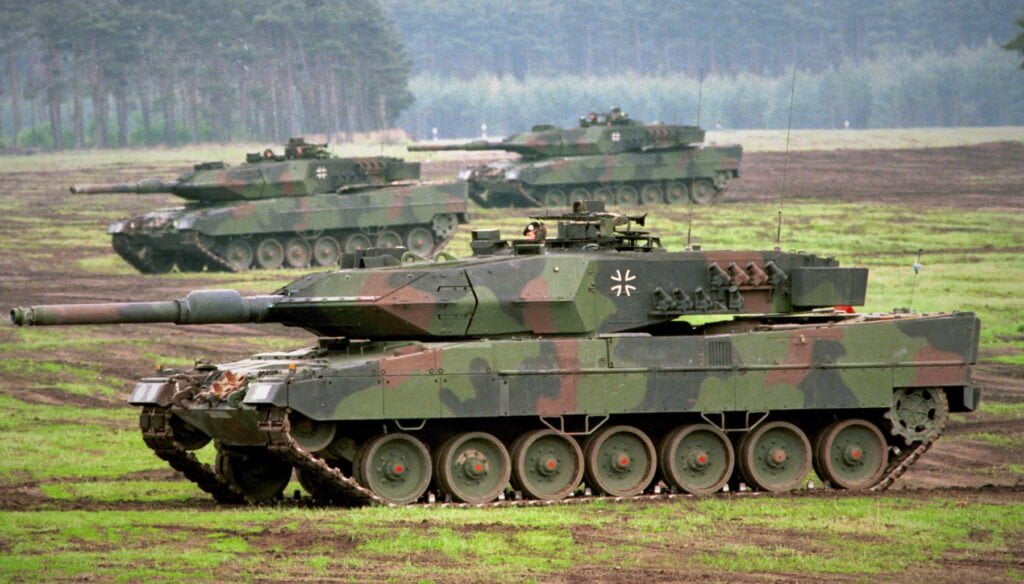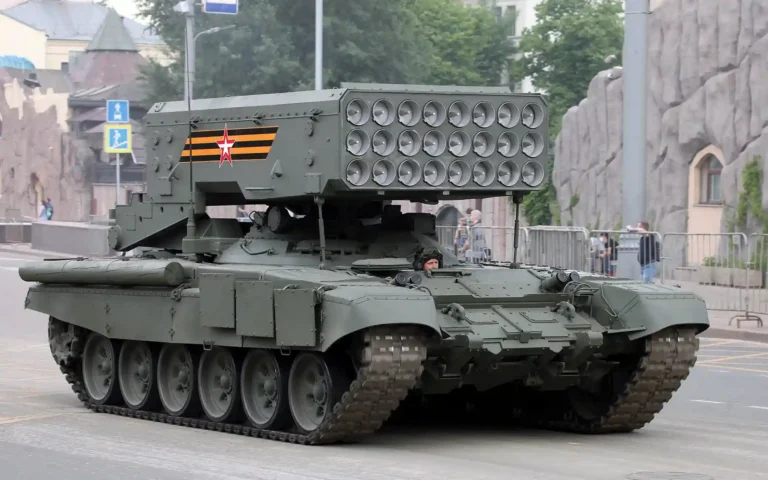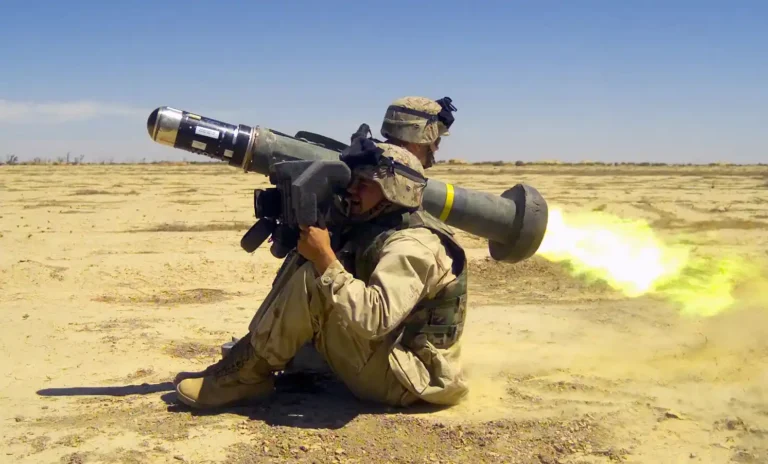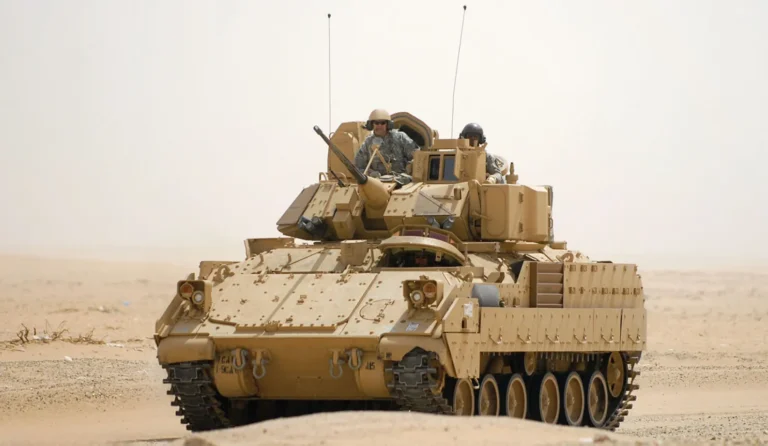Follow Us:
Share
Table of Contents:
Defense Feeds – In the tumultuous landscape of the Ukrainian conflict, a new mystery has emerged as the formidable Leopard 2 tanks suddenly withdraw from the frontlines. These Western-engineered behemoths of war, provided to Ukraine by Poland and Portugal, have become a subject of intrigue and speculation as they retreat from the battle against Russian forces.
On July 3, after the destruction of 16 Leopard tanks, Ukraine decided to pull its Leopard 2 fleet from the frontline, leaving many to wonder about the true reasons behind this withdrawal. Is it a tactical maneuver, or are there underlying challenges that led to this decision?

In the heart of the Ukrainian conflict, a gripping saga unfolds as the formidable Leopard 2 tanks mysteriously retreat from the frontlines, leaving behind a veil of intrigue and speculation. Rumors abound, and whispers of clandestine motives hang in the air. What could have compelled the withdrawal of these Western-engineered beasts of war?
Before delving into the reasons, let’s call back to what has happened in the conflict recently.
On July 3, Russian Defense Minister Sergey Shoigu made an announcement, claiming the destruction of 16 German-made Leopard tanks provided to Ukraine by Poland and Portugal.
These tanks were allegedly targeted and destroyed during unsuccessful Ukrainian attacks in the southern direction of Donetsk, Zaporizhzhia. Disturbing footage circulated on Telegram, revealing a precise strike by a Russian Lancet UAV on a German Leopard tank, resulting in its destruction and billowing smoke.
In response to the escalating situation, Ukraine has decided to withdraw its Leopard 2 tank fleet from the frontline of battle. This decision amidst Ukraine’s intense conflict left many puzzled.
“What are the real reasons behind its withdrawal? Is this just a tactical maneuver by Ukraine to deceive Russia? Allowing Russia to revel in its success and then surprising the world with a counterattack?” only time could unfold this mystery…
According to Military Cognizance, the failure of the Leopard 2 tanks in Ukrainian combat cannot be solely attributed to their poor quality. These tanks are still among NATO’s most modern and capable assets. However, three intriguing reasons shed light on the decision to withdraw these Western beasts from the heart of the Ukrainian battlefields:
The advancing Russian forces presented a daunting challenge by deploying minefields and relentless artillery fire.
In the context of the relative ineffectiveness of the German-made Leopard 2 tanks in the Ukrainian war, one of the primary reasons can be attributed to the challenges posed by minefields and artillery fire from Russian forces.
Russian forces have strategically planted mines in the conflict zone, creating minefields that threaten advancing armored vehicles, including the Leopard 2 tanks. These mines are designed to target and disable tanks, making it difficult for the Ukrainian forces to maneuver effectively and safely.
Furthermore, the Russian forces heavily employ anti-tank missiles, which are highly effective against armored vehicles like the Leopard 2. These anti-tank missiles can penetrate the tank’s armor, causing extensive damage or destruction. These anti-tank missiles constantly threaten the Leopard 2 tanks on the frontlines.

In addition to anti-tank missiles, Russian forces use helicopters extensively, providing them with aerial firepower and surveillance capabilities. These helicopters can effectively target and engage armored vehicles, including the Leopard 2 tanks, from above, further endangering their effectiveness on the battlefield.
The combined threat of minefields, anti-tank missiles, and helicopter attacks creates a challenging environment for the Ukrainian forces. They lack sufficient strength and resources to effectively suppress and counter the advancing mechanized forces.
As a result, the Leopard 2 tanks need help navigating these hostile conditions and effectively engaging Russian troops.
Secondly, despite their technological advancements, the Leopard 2 tanks proved complex and prone to damage, requiring extensive maintenance.
The Leopard 2 tanks are known for their advanced technological features and sophisticated systems, contributing to their battlefield effectiveness. However, the downside of this complexity is that they are more susceptible to damage than Soviet and Russian tanks, which often have more straightforward and sturdier designs.
When the Leopard 2 tanks experience mechanical failures or sustain damage during combat, they require significant maintenance efforts to restore them to operational condition. This involves specialized technical expertise, spare parts, and time-consuming repairs.
However, Ukraine’s logistical capabilities are reportedly unable to afford or effectively handle these significant repairs for the German tanks directly on the battlefield.
As a result, if the Leopard 2 tanks encounter significant issues that render them inoperable, they need to be transported to repair facilities in Poland. This logistical challenge of sending the tanks to another country for repairs further contributes to the overall operational inefficiency and reduced effectiveness of the Leopard 2 tanks in the Ukrainian war.
The time required for repairs and the logistical hurdles involved in the process create delays and reduce the availability of these tanks for combat operations.
With limited logistical capabilities, Ukraine cannot sustain the demands of major repairs on the battlefield. The Leopard 2’s intricate systems and components become a double-edged sword, as their sophistication makes them susceptible to damage, while their maintenance becomes a daunting challenge.
Thirdly, a captivating mystery surrounds the motivations of the Russian Ministry of Defense and its soldiers to target Western-made equipment, including the Leopard 2.
The Russian Ministry of Defense and their allied group have established award policies that incentivize and reward their troops for successfully engaging and neutralizing Western-made equipment, including tanks.
This policy sends a clear message to Russian soldiers that targeting and disabling Western tanks, such as the Leopard 2, can lead to recognition and rewards, thus motivating them to prioritize these specific vehicles in combat.
This strategic focus on attacking Western-made equipment aligns with a report by the Russian media outlet RIA Novosti, which cites statements from several Ukrainian prisoners of war.
Surprisingly, these prisoners feel unsafe while operating US and Western-contributed combat vehicles. Due to the aforementioned award policies and motivations, they reveal that these vehicles have become primary targets for Russian forces.
The knowledge that their adversaries specifically target Western-made equipment, including the Leopard 2 tanks, has likely created a sense of vulnerability and insecurity among Ukrainian troops.
This awareness can impact their confidence and effectiveness on the battlefield, knowing that their equipment is particularly sought after and likely to be heavily targeted by Russian forces. This unsettling revelation casts a dark shadow over the battlefield, where Leopard 2 finds itself in a dangerous game of cat and mouse stalked by an adversary driven by perverse incentives.
Share
Defense Feeds
Defense Feeds is publication focusing on informing, engaging, and empowering the world by providing accurate information from defense technology.
Powered by Defense Feeds © 2025 – All rights reserved.




